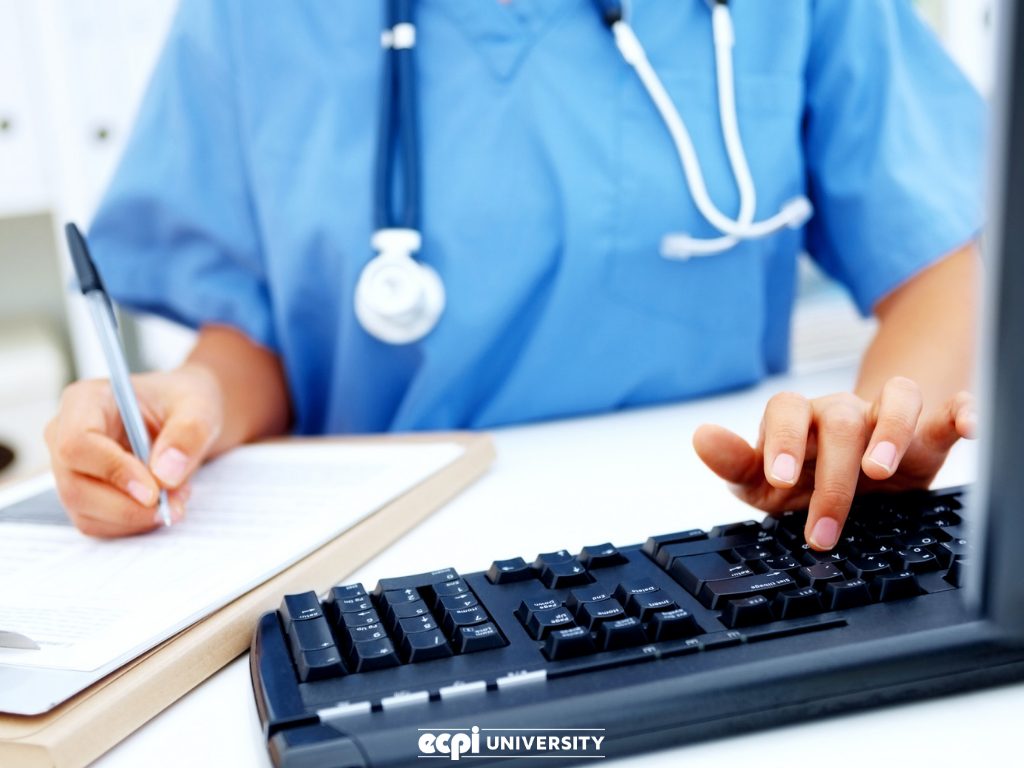Exactly how to Begin an Effective Job in Medical Administration: A Beginner's Guide
Exactly how to Begin an Effective Job in Medical Administration: A Beginner's Guide
Blog Article
Best Practices in Medical Management for Improving Effectiveness and Minimizing Expenses
In the ever-evolving landscape of healthcare, the pursuit of best practices in clinical administration is extremely important for boosting efficiency and curbing expenses. By incorporating innovative innovations such as digital wellness records and telemedicine, healthcare companies can enhance operations and improve individual care. Innovation alone is not a cure all; enhancing resource allocation and cultivating joint communication amongst treatment teams are just as vital. As organizations strive to balance quality and cost, what techniques should be prioritized to attain these double goals? The response to these inquiries hold the secret to an extra lasting healthcare system.
Leveraging Advanced Technology
In today's rapidly advancing healthcare landscape, leveraging sophisticated modern technology is no more optional however crucial for reliable clinical administration. The combination of electronic services into healthcare systems has changed the means centers run, simplifying procedures and enhancing client treatment. Electronic Health And Wellness Records (EHRs) are crucial, providing thorough client information that can be accessed immediately by authorized employees, hence minimizing redundancy and decreasing mistakes. By systematizing patient details, EHRs remove the need for troublesome documents and assist in smooth communication among health care companies.
Telemedicine is another technological development that has reinvented patient interaction. It provides benefit for both people and healthcare experts by enabling remote examinations, which can minimize the need for in-person check outs and maximize visit scheduling. Additionally, telehealth platforms can extend health care access to rural or underserved areas, connecting voids in care distribution.
In addition, using Artificial Knowledge (AI) and artificial intelligence is ending up being significantly widespread in anticipating analytics, enabling early detection of potential health issues and more enlightened decision-making. These technologies, when integrated effectively, can boost analysis accuracy and customize patient therapy strategies, eventually causing improved medical care results and functional effectiveness.
Optimizing Source Allowance
By strategically handling sources such as employees, devices, and finances, health care facilities can substantially boost their functional performance, boost client results, and minimize unneeded expenses. The very first action in maximizing resource appropriation includes carrying out a comprehensive assessment of existing possessions and recognizing locations where sources might be underutilized or exhausted.
Prioritizing source allocation based on client requirements and solution needs is vital. This includes straightening sources with high-demand areas, such as emergency situation treatment or specialized therapies, to make sure timely and reliable individual care. Executing flexible staffing designs can also enhance labor resources by changing employees allocation in action to changing individual quantities. Furthermore, embracing telemedicine and other technical solutions can minimize physical resource restraints by offering alternate methods for patient-provider communications.
Funds must be thoroughly kept an eye on and designated with calculated insight to support both short-term operational needs and long-lasting institutional objectives. This consists of investing in training programs that boost staff expertises and embracing energy-efficient practices that minimize operational expenses (medical administration). Inevitably, an enhanced source appropriation strategy fosters a sustainable medical care environment that is responsive, efficient, and monetarily sensible
Streamlining Operations Processes
When health care facilities objective to boost functional effectiveness, improving process procedures becomes a critical focus. Reliable operations reduce redundancy, get rid of unneeded steps, and improve control amongst healthcare professionals. This technique not only speeds up service shipment yet additionally enhances the high quality of client care.

Next, modern technology combination plays a considerable role in streamlining process. Applying digital health records (EHRs) and computerized check it out medical professional order access (CPOE) systems minimizes documentation, minimizes human error, and makes certain details comes to all appropriate personnel. In addition, leveraging telemedicine platforms can simplify you can try here person appointments and follow-ups, minimizing the stress on physical facilities.

Inevitably, structured workflows result in set you back reductions and improved client complete satisfaction, fostering an extra sustainable healthcare atmosphere.
Enhancing Information Administration
Building upon streamlined process, optimizing information administration becomes a vital part ahead of time health care management. Efficient information monitoring systems are crucial for keeping accurate client documents, improving decision-making, and guaranteeing conformity with regulative criteria. By executing robust information management options, medical care facilities can improve the high quality of person treatment while at the same time lowering operational prices.
One secret element of boosting data administration is the integration of innovative digital health document (EHR) systems. These systems promote the smooth exchange of patient information across different divisions, reducing duplication of tests and lessening mistakes. A well-designed EHR system sustains information analytics, allowing browse this site health care service providers to recognize fads and make informed decisions regarding patient treatment.
Additionally, safeguarding individual data is extremely important. Taking on comprehensive cybersecurity steps, including file encryption and regular audits, makes certain the stability and privacy of delicate information. This not just secures clients yet also keeps the establishment's credibility.
Buying staff training is an additional crucial variable. Informing medical care specialists on data management practices boosts their ability to efficiently utilize modern technology, causing enhanced individual end results. In conclusion, enhancing information management via sophisticated innovation and thorough training is important for accomplishing performance and expense reduction in clinical management.
Fostering Collaborative Interaction
A crucial element beforehand clinical administration is promoting collaborative interaction among medical care professionals. Efficient communication is extremely important for making certain seamless person treatment, maximizing treatment outcomes, and decreasing mistakes. By encouraging open discussion and coordination across multidisciplinary groups, medical care organizations can boost their operational performance and decrease unneeded expenses.
Central to this method is the integration of interaction innovations such as electronic health records (EHRs) and secure messaging systems, which facilitate the rapid exchange of vital person info. These tools allow doctor to gain access to and share information in actual time, guaranteeing that all group participants are educated and lined up in their decision-making procedures. Regular group meetings and interdisciplinary rounds can even more advertise a society of collaboration and accountability.
Training programs focused on enhancing interaction skills are also vital. These programs can assist team create the capacity to communicate details clearly and listen actively, therefore lowering misconceptions and cultivating an encouraging workplace. On top of that, taking on standard interaction methods, such as SBAR (Circumstance, History, Analysis, Suggestion), can enhance the exchange of information, making certain that important details are communicated succinctly and effectively. Ultimately, cultivating joint interaction causes enhanced healthcare distribution and cost savings (medical administration).

Final Thought
Incorporating innovative modern technology, such as digital health documents and telemedicine, along with maximized source allowance and streamlined operations procedures, is crucial for enhancing effectiveness in clinical management. Effective data management and fostering collaborative interaction among healthcare groups are critical for reducing redundancies and enhancing treatment high quality. By focusing on preventative care and participating in top quality improvement campaigns, medical care companies can achieve significant expense financial savings and improved patient end results, therefore making sure sustainable healthcare shipment in an increasingly complex atmosphere.
Report this page